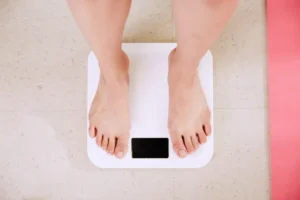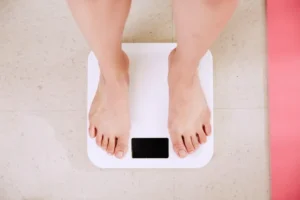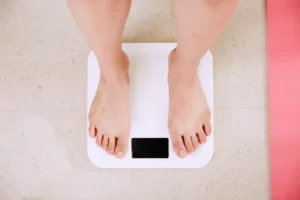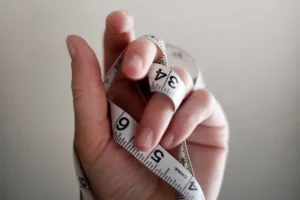When it comes to weight management, calories to pounds is the foundation that makes or breaks results. Every bite you take, every sip you enjoy, and every workout you finish ties back to this simple principle. Understand it, and you unlock the ability to gain, maintain, or lose weight with precision. Ignore it, and progress becomes a guessing game. The great news? The math isn’t complicated. The hard part isn’t knowing—it’s applying it in a way that works for your lifestyle.
Here’s the core rule: about 3,500 calories equals one pound of body weight. This means if you eat 3,500 calories more than your body burns, you’ll gain roughly a pound. Eat 3,500 calories less over time, and you’ll lose about a pound. It’s not magic—it’s metabolism at work. And once you understand this relationship, you can start using calories like a tool rather than treating them like a mystery.
Why “Calories to Pounds” Isn’t Just About the Math
It’s tempting to think of this as nothing more than numbers, but reality adds layers. Your metabolism shifts. Hormones play a role. Even your sleep quality can impact how your body processes calories. Still, calories to pounds remains a reliable baseline for planning. Think of it like a budget—you can track spending without knowing every single economic factor in the world, but you still have to pay attention to where your “money” (calories) goes.
One mistake people make is treating all calories the same. Technically, 500 calories from vegetables and 500 calories from donuts are equal in energy. But they’re worlds apart in how they affect hunger, blood sugar, and nutrient intake. That’s where smart calorie choices turn a decent plan into a great one.
Calories to Maintain 200 Pounds
Let’s get specific. If you want to know the calories to maintain 200 pounds, you start with your Basal Metabolic Rate (BMR)—the calories you burn at rest. Then, you factor in your daily activity.
For many adults, maintaining 200 pounds requires somewhere around 2,400–2,800 calories per day depending on activity level, age, and gender. A sedentary office worker might be at the lower end, while a construction worker or regular gym-goer lands on the higher side.
Action Step: Track your intake for one week without changing your eating habits. If your weight stays stable, you’ve found your maintenance number. If it rises or falls, adjust by 200–300 calories per day until you lock in your true maintenance level.
How Many Calories to Maintain 135 Pounds Female
For women weighing 135 pounds, calorie needs for maintenance are usually between 1,600–1,900 calories a day with moderate activity. But remember—this is a ballpark. Factors like muscle mass and lifestyle make a big difference.
Pro Tip: If you’re aiming to maintain this weight after losing it, slowly increase your calories to this range over a few weeks rather than jumping up overnight. This helps prevent rebound gain.
If I Weigh 200 Pounds, How Many Calories Should I Eat to Lose Weight?
Weight loss is where the calories to pounds principle gets powerful. If your maintenance level at 200 pounds is 2,600 calories a day, shaving off 500 calories daily (through diet, exercise, or both) will lead to about a one-pound loss per week.
But here’s where many go wrong: they cut too fast. Dropping to 1,200 calories a day might seem like a quick route, but it often leads to fatigue, muscle loss, and binge eating later. The smarter approach? A sustainable deficit—usually 500–750 calories below maintenance.
Example Plan:
- Maintenance: 2,600 calories/day
- Target deficit: -600 calories/day
- New daily intake: 2,000 calories/day → ~1.2 lbs lost per week
Calories to Maintain 170 Pounds
At 170 pounds, many moderately active adults need about 2,000–2,300 calories per day to maintain. If you’re dropping down from a higher weight, you’ll notice your calorie needs shrink as you get lighter. That’s normal—your body simply burns less energy to move a smaller frame.
Action Step: Recalculate your calorie needs every time you lose 10 pounds. This keeps your plan aligned with your new body’s requirements.
How Many Calories to Maintain 130 Pounds Female
For active women at 130 pounds, the range is often 1,500–1,800 calories daily. If you’re training hard or have a physically demanding job, it may push closer to the higher end.
To avoid unintentional weight loss at this stage, focus on calorie-dense but nutrient-rich foods—think avocado toast, salmon with rice, or oatmeal with nut butter. These allow you to hit calorie goals without resorting to ultra-processed snacks.
How Many Calories to Maintain 300 Pounds
Maintaining 300 pounds requires significantly more energy—often 3,000–3,500 calories daily for a moderately active person. That’s why heavier individuals can often lose weight faster at the beginning of a diet: they can create a large calorie deficit without eating a very low number of calories.
If your goal is weight loss, use this as a starting point and drop gradually. A 1,000-calorie daily deficit may be safe at this size (with medical supervision), leading to about two pounds per week of fat loss.
Calories to Maintain 120 Pounds
This is often the lowest maintenance range for adults—about 1,400–1,700 calories per day depending on activity and muscle mass. At this level, it’s easy to accidentally undereat or overeat, so awareness is key.
A smart move? Use volume-friendly foods like leafy greens, berries, and lean proteins to stay full without going over your limit.
How Many Calories to Maintain 170 Pounds
Yes, this came up earlier, but it’s worth repeating—especially for those in active weight management. At 170 pounds, you’ll need fewer calories than you did at 200, but more than at 150. Knowing these exact numbers helps you adjust in real time and avoid frustrating plateaus.
Turning “Calories to Pounds” Into a Daily Practice
Knowing the math is one thing. Living it is another. Here’s how to make calories to pounds work in your real life:
1. Track without obsession. Use a food tracking app for a few weeks to build awareness. Then, trust your instincts more while spot-checking occasionally.
2. Combine diet with movement. Cutting 500 calories from food alone can feel restrictive. Split it—250 from food, 250 from extra walking or workouts.
3. Adjust for life events. Vacations, holidays, and stress all change your eating patterns. Plan for them rather than reacting after the fact.
4. Focus on food quality. Calorie control is easier when meals are built around protein, fiber, and healthy fats.
5. Reassess every month. Your body adapts. Revisit your numbers to keep progress moving.
Why Flexibility Beats Perfection
Here’s the truth: no one hits their calorie target perfectly every single day. That’s okay. What matters is your weekly and monthly average. If you overshoot one day, pull back slightly the next. This flexibility prevents burnout and makes the calories to pounds principle sustainable over the long term.
And remember—numbers are just a guide. Your body is the final judge. Use the scale, mirror, energy levels, and how your clothes fit as feedback.
Final Word
Understanding calories to pounds gives you control over one of the most important levers in weight management. Whether you’re maintaining 200 pounds, aiming for 130, or starting your journey at 300, the numbers empower you to make deliberate choices. And with consistent, smart adjustments, those choices add up to the results you want.
FAQs on Calories to Pounds
About 3,500 calories equal roughly one pound of body weight. This applies to both weight gain and loss when averaged over time.
Find your Basal Metabolic Rate (BMR) and multiply it by your activity factor. This gives you a daily calorie target for maintenance.
Most people need between 2,400–2,800 calories daily at this weight, depending on activity level and gender. Tracking for a week helps confirm your number.
Start with your maintenance calories and subtract 500–750 per day. This usually results in losing 1–1.5 pounds per week.
A moderately active woman at 135 pounds often needs 1,600–1,900 calories daily. Your exact needs depend on age, activity, and muscle mass.
Your calorie needs drop as you lose weight because a smaller body burns fewer calories. Recalculate every 10 pounds lost for accuracy.
Technically yes for weight math, but food quality matters. Nutrient-rich calories help with satiety, energy, and long-term health.













